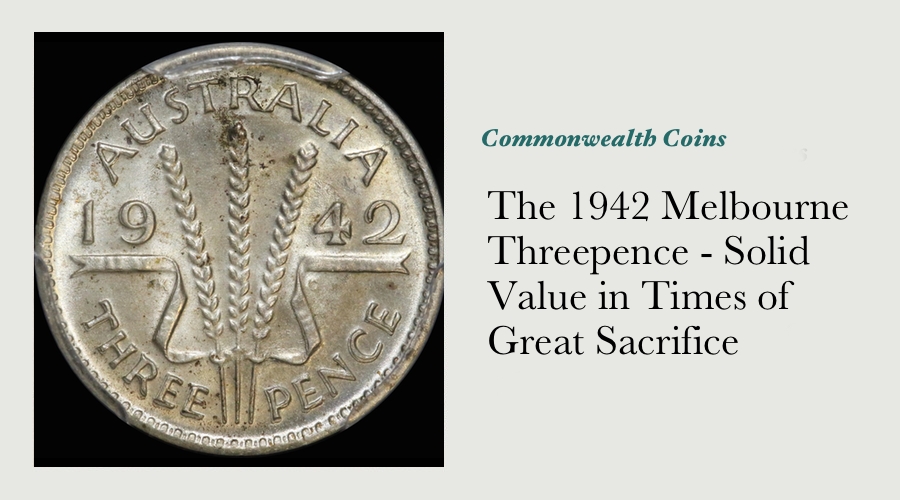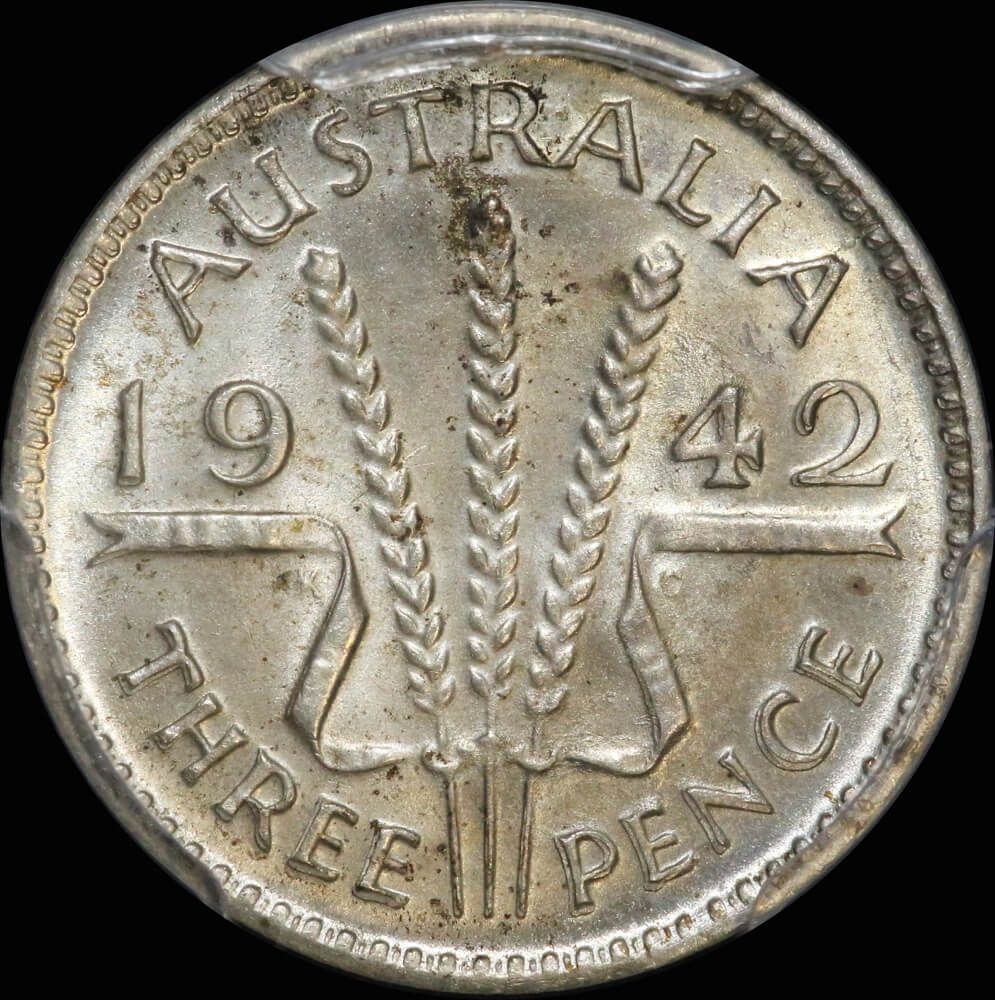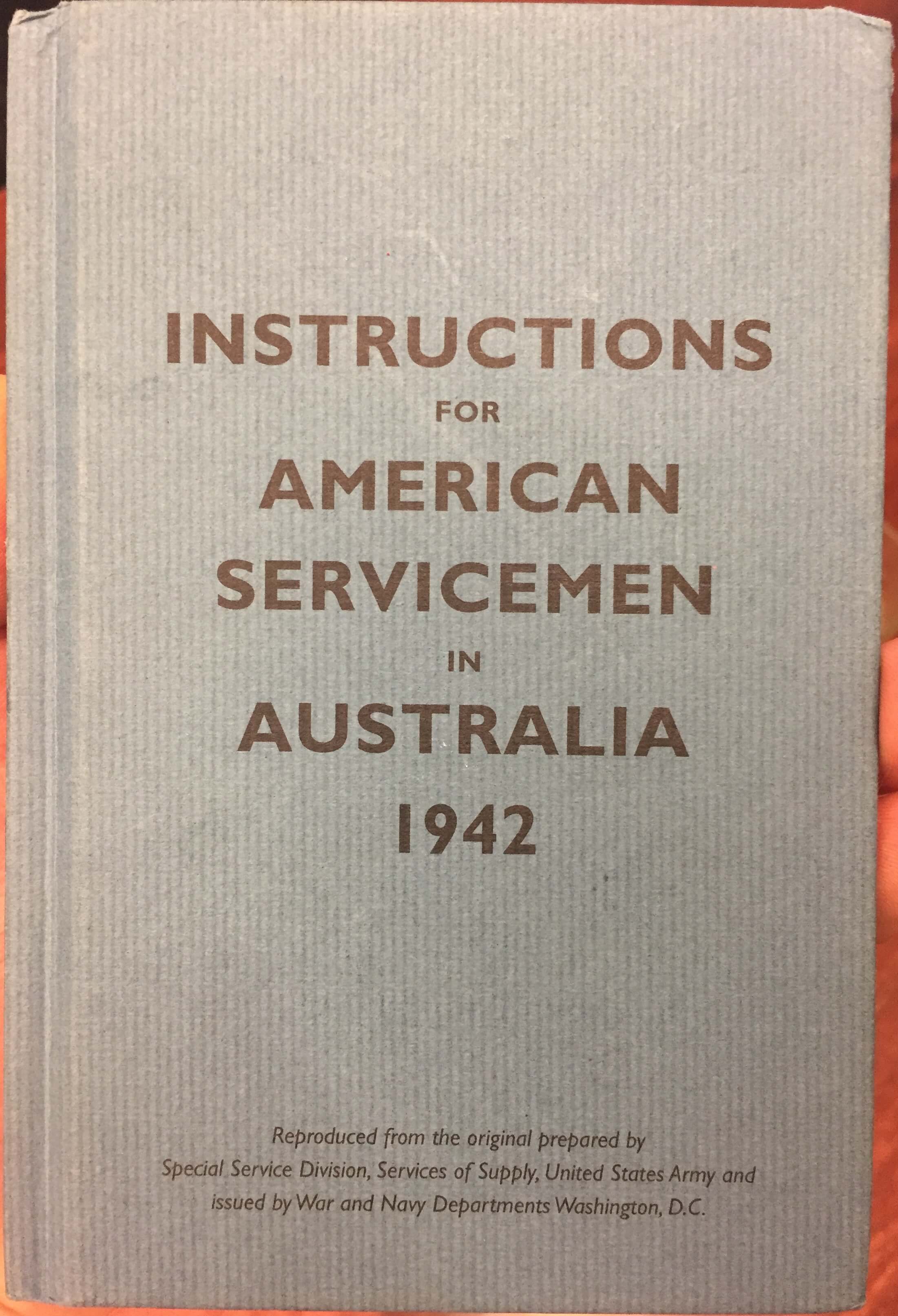The 1942 Melbourne Threepence - Solid Value in Times of Great Sacrifice

From the safety and security of the 21st century, it is incredibly difficult for us to appreciate just how challenging daily life was for Australians living in Melbourne in 1942. The Japanese armed forces were slowly making their way throughout South East Asia towards Australia, while living conditions reflected the grim sacrifices being made by Australia’s service personnel in the Middle East and against the Japanese.
Although the Melbourne Mint struck around 31 million coins throughout 1942, the mintage of the 1942 Melbourne threepence is amongst the lowest of any Australian coin struck for circulation in the past 80 years. In mint condition, it is a classic rarity and is the key coin to acquire in Australia's King George VI series.
Sacrifices Made Across the Country for the War Effort
World War II began in September 1939, Australian troops had been in action since January 1941. The Japanese launched their shock offensive against the United States at Pearl Harbour in December 1941, and made rapid progress invading a series of South East Asian countries in the months that followed. The Japanese captured Singapore in February 1942. Singapore was the major British military base in South-East Asia, and was the keystone of British imperial interwar defence planning for South-East Asia as well as the South-West Pacific. Winston Churchill called the loss of Singapore the "worst disaster" in British military history.

15,000 Australian troops were made prisoners of war by the Japanese in that conflict alone, and it is estimated that around 5,000 Allied troops were killed also. Although the conflict areas of Singapore, Borneo, New Guinea and Malaya (among others) were all many thousands of kilometres away from most Australians, the morale of the Australian populace was heavily hit by losses such as this.
The concern for the welfare for Australia’s soldiers captured far from home was further compounded by intermittent Japanese bombing of cities and towns in Northern Australia from February 1942 - Darwin; Katherine; Port Hedland; and Townsville were all hit - 300 people died in the first bombing of Darwin alone. Japanese midget submarines raided Sydney Harbour in May of 1942, further increasing concerns that the Japanese were slowly but relentlessly driving their way towards Australia’s largest cities. Concerns such as these played on the minds of Australians each and every day.
As the war rolled on, prominent buildings in Melbourne were sandbagged or partly bricked up; rolling blackouts were enforced; key museum treasures were relocated for safe keeping; there was heavy censorship; and essentials such as butter, sugar and petrol were rationed. One Melbourne woman interviewed after the war reported that ini 1942 "Melbourne was an empty city. The only men you saw were little boys or very old men...Women drove the trains, women delivered the mail, women did everything….” The Japanese military may have been thousands of miles away, however Australians right across the country were making sacrifices for the war effort.
The Arrival of US Forces - A Welcome Announcement

In the face of Japanese aggression, Australia’s Prime Minister John Curtin stated in December 1941 that "Without any inhibitions of any kind, I make it quite clear that Australia looks to America, free of any pangs as to our traditional links or kinship with the United Kingdom.” It was a welcome announcement then that the US General Douglas MacArthur would command Allied military operations in the Pacific from an Australian base. Melbourne was chosen as the initial site of the Allied headquarters, and it was host to more than 30,000 U.S. soldiers from early 1942. Before WWII was complete, close to 1 million US servicemen had spent time in Australia.
The arrival of these soldiers had an immediate impact on Australian society and the economy. Not only were the US servicemen “over-sexed, overpaid and over here”, they were paid in cash, which meant a substantial amount of work for the staff of Australia’s mints.
Bombay, Denver and San Francisco all Called Into Action
The amount of coins estimated as necessary to pay US troops while based in Australia was ten times that struck in 1939, a level quite obviously well beyond the pre-war capacity of the Melbourne Mint, much less what it was capable of while it was under-manned and under-resourced.
To fill the gap between the capacity of Australia’s mints and the total number of coins required, the Bombay Mint in India was called upon to strike copper pennies and halfpennies, while the Denver and San Francisco mints of the United States were tasked with striking Australian silver coins.
Before the Melbourne Mint’s burden could be lightened by the co-operation of the Indian and American mints, it needed to prepare the hubs; dies and punches those foreign mints would use. Research by the numismatist Dr David Briggs has shown that between 1939 and 1942, the Melbourne Mint produced close to 4,000 coining dies, as well as numerous hubs and punches.
It is understood that, once they had the required equipment, the US mints stated they would be able to deliver £200,000 worth of coins to Australia per week, which equated to 16 million threepences or 8 million sixpences. Interestingly, those figures correspond with the number of Australian threepences struck in the US in 1942 - 16 million by the Denver Mint, and 8 million by the San Francisco Mint.
As the Melbourne Mint had been tasked with striking close to 18 million florins and around 8 million sixpences itself during 1942, the mintage of just 528,000 threepences in 1942 indicates that it may have been required to meet a particular short-term deadline for a particular city or state. The Melbourne Mint struck close to 25 million threepences throughout 1943, so a production run of only slightly more than half a million coins didn't go very far at all at making a dent in the overall need for coins in Australia at that time. Research by Dr David Briggs indicates that the punches were not made for these coins until the second half of 1942, which indicates the coins were not struck until June 1942 at the very least.
Further examination of mint records will no doubt shed more light on just how this particular coin fits into the schema of Australia’s coinage during the second world war. It remains a classic rarity in mint state - the key coin to acquire in Australia's King George VI series, and is a tangible reminder of the sacrifices made by all Australians at a time when rationing, blackouts and bombing raids were an expected part of daily life in Australia.